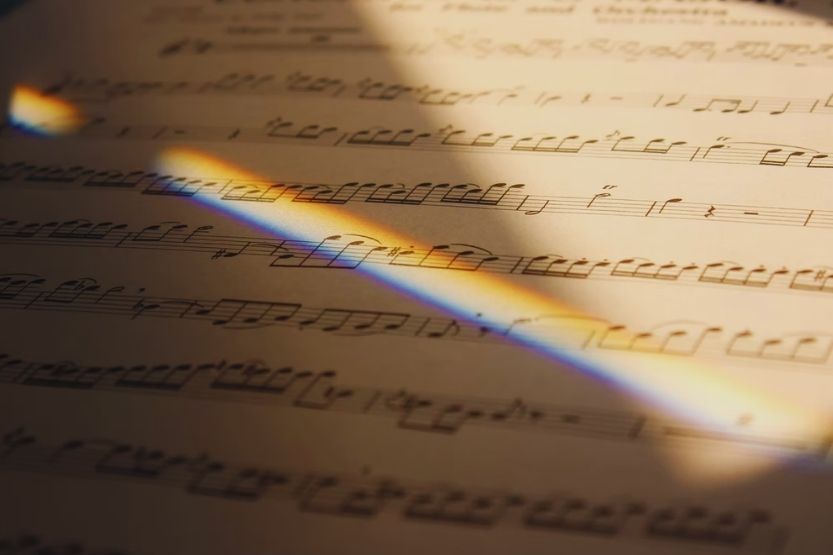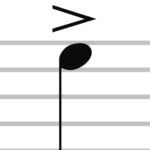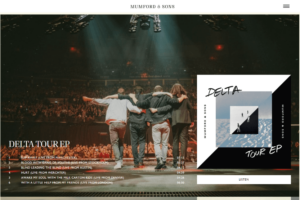From jazz to folk, classical to rock, music has different parts, and one of the most important is the refrain. Whether creating music or singing a song, the refrain is one technical term that you must understand.
Refrain is from the old French word refraindre and the Latin word refringere, which means to repeat. It is the repetition of a line or multiple lines in music. The refrain finishes the lyrical thought and brings chord progression to music. It is often used interchangeably with the chorus, although they are distinct parts. Some songs, however, combine refrain and chorus.
Read on to learn more about what is refrain in music is, including tips in writing one and how it is different from a chorus.
What Is Refrain in Music?

Repeated Lines in Music
A refrain is a repeated line in music in the simplest sense. It is from the old French word refraindere and the Latin word refringere.
The two components of refrain in music are:
- Written lyrics
- Melody of the music
The use of refrain originates in poetry, but it has the same application in music – repeated words or lines.
Easy to Remember
A refrain creates the song’s start and end that ties it to a composition. It is easy to recognize being repetitive, which is also why some people often have it mistaken as the chorus.
Two Essential Structures of Songs
A lot of songs have two essential structures – verse and refrain. The repetition of the refrain gives the listeners stability and comfort, making them easily recognize something that they have not heard of before.
Not Always Exact Repetition
While it is often the same, the refrain does not have to be always an exact repetition. There can be small differences in the wordings, but the song’s refrain can still be considered.
Like other parts of a song, however, the idea of a refrain is not 100% absolute. There is no industry or international standards that dictate what it is and what it isn’t. The exact definition depends on the creativity of the songwriter.
What Does a Refrain Do?
The function of the refrain depends on the composer or creator. It is not just a repetition. It wants to accomplish something, including those we’ll briefly talk about below:
1. Finishes the Lyrical Thought
One of the essential functions of the refrain is to finish the thought of the lyrics. The words in the verses are usually different, and it is the refrain that will tie them. It can be the philosophy of the song or the fine logical line. This is what can provide a more robust meaning to the lyrics.
2. Closes the Chord Progression
With its ability to execute chord progression, a refrain is critical in verse completion. During a refrain’s progression, it is common, to begin with, a non-tonic chord, then transition into the final tonic chord. Refrains are usually short, which often have a length of two to three chords.
3. Creates a Climactic Point
Another function of the refrain is to create a song’s high point. While most people will never forget the chorus, it will also create the necessary climax if the refrain is written effectively. This can be what will make the song memorable.
Refrain vs Chorus

Refrain and chorus are two words that are often used interchangeably in music. While they both refer to a song’s recurring parts, there are also key differences. The chorus is often longer compared to a refrain. It is a whole series of phrases that are sung between verses.
A chorus is a strophic form, one-part song form, or AAA song form in music. It has verses or stanzas with the same melodies. It creates a familiar rhythm, which makes a song easy to recognize. The chorus is more intense emotionally and significant musically compared to a refrain. It is the song’s central idea.
Other Parts of a Song
Aside from the refrain and chorus, below are other parts that you will often find in a song:
1. Intro
As the name implies, this is the song’s introduction. It is the first line that the listeners will hear. The challenge is to make it catchy and melodic. Otherwise, people may not be interested in listening more.
2. Verse
Whether instrumental or lyrical, this is often the heart of the song. It tells the main story that the song would like to convey. More or less, the verses will be identical, which will make them easy to remember.
3. Pre-Chorus
You can see the pre-chorus as an optional part that you will find before the chorus. It is like a spacer between the verse and chorus. It builds up anticipation or suspense, preparing the listener for the chorus.
4. Bridge
Many composers think of the bridge as the palate cleanser in a song. It introduces a new musical or lyrical content, which disrupts the standard flow of the verse or chorus.
5. Outro
Also known as a coda, it is another part of the song that often stirs the emotion, making it significant in the overall arrangement. It can be a part of the verse or chorus that has been repeated.
6. Hook
It is technically not a part of a song but can be an important component. It can be two to three words that will hook the audience. This is something that a person will never forget.
Again, what is a refrain in music? The word refrain originated from the Latin word refringere and refraindre from the Old French, which means to repeat. So, in music and poetry, refrain refers to repeated lines. Some fixed poetic forms that have refrains include villanelle, the virelay, and the sestina.
Tips for Writing an Effective Refrain

If you’re writing a song and want to learn how to make an effective refrain, below are some of the most important tips to keep in mind:
1. Find a Catchy Lyrical Hook
With too many songs written these days, your goal is to stand out. Find something that will set you apart from the others, and this can be in the form of a refrain. This will be your lyrical hook, something that will remain in the listener’s mind. It should sum up the meaning or message of the song.
To create a lyrical hook in your refrain, you will need a melodic leap, a chord progression, and a rhythmic device. The combination of these three factors will make your song catchy. This way, even if people do not hear the whole song, they will recognize it through the words or lines that are repeated in the lyrics.
2. Keep It Simple
Less is more – this is one of the most important philosophies you should adopt when writing a song’s refrain. The more complicated a refrain is, the more difficult it is to remember the song. It will lose its catchiness. Use short words that your listeners can easily understand. Even the chords should be simple while keeping it tonally strong.
3. Tie It to the Other Parts
Some people might write the refrain only to create a catchy line. Nonetheless, it is also important that you tie it to the other parts of the song, especially those directly before and after it. Create a seamless and coherent transition in your refrain from the melody to the meaning. Otherwise, it will be off.
4. Avoid Too Much Rhyming
Using rhymes is quite a tricky tactic when writing a song. At one end, it might seem good because it makes the lyrics easier to recall. Nonetheless, there are times that it can also be childish.
It might seem like the song has not been given careful thought, to the point that some might see it as a joke. Be subtle when using rhymes, and ensure that you do not overdo it.
5. Have a Killer Melody
It is not enough that you have killer lyrics. The latter will be useless in the absence of a killer melody. You need to complement the words with the rhythm that will make people hum wherever they are or whatever they do.
The melody must tie to the other parts of the song as well. Think about the specific words or parts of the refrain that you would like to emphasize to find the melody that works the best.
Examples of Refrain in a Song
As we conclude this guide, below is a quick rundown of refrain examples in some popular songs:
1. Hey Ya! by Outkast
Shake it, sh-shake it, shake it, sh-shake it (Uh-oh)
Shake it, sh-shake it, Shake it, shake it, sh-shake it (Uh-oh)
Shake it like a Polaroid picture, hey ya!
2. Time After Time by Cindy Lauper
If you’re lost, you can look, and you will find me
Time after time
If you fall, I will catch you; I’ll be waiting
Time after time
3. Wake Me Up When September Ends by Green Day
Summer has come and passed
The innocent can never last
Wake me up when September ends
Like my father’s come to pass
Seven years has gone so fast
Wake me up when September ends
4. Blowing’ In The Wind by Bob Dylan
“The answer, my friend
Is blowin’ in the wind
The answer is blowin’ in the wind.”
5. Call Me Maybe by Carly Rae Jepsen
Hey, I just met you, and this is crazy
But here’s my number, so call me maybe
It’s hard to look right at you, baby
But here’s my number, so call me maybe
Hey, I just met you, and this is crazy
But here’s my number, so call me maybe
And all the other boys try to chase me
But here’s my number, so call me maybe
Conclusion – What Is Refrain in Music?
The refrain is an essential component of a song or music. It means repetition, which talks about what is in a composition. It is a line or multiple lines that are repeated several times. The refrain adds rhythm through repetition. Because it is catchy, most people often confuse it with the chorus, although the two are different parts but sometimes interchanged.
When creating music, pay attention to how you write the refrain. Find a way to make it catchy and relevant. Look for the right melody and tie it to the entire song. Avoid overdoing the rhymes. Make sure that it matches the verses before and after the refrain. Listen to it repeatedly, ensuring that it has a hook.






![What Is Music Without Lyrics Called [and Popular Instrumentals] what is music without lyrics called](https://musicalinstrumentpro.com/wp-content/uploads/2022/09/what-is-music-without-lyrics-called-150x150.jpg)


